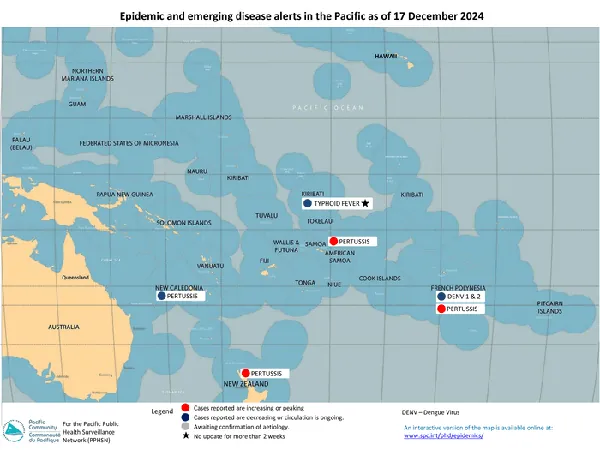
Groundbreaking Discovery: Ancient Fossil Seed Unveils Secrets of Ice Age Climate Change!
2024-12-19
Author: John Tan
Ancient Fossil Seed Discovery
A team of scientists at the La Brea Tar Pits has made a remarkable breakthrough by identifying a new species of juniper, officially classified as *Juniperus scopulorum*, or the Rocky Mountain Juniper. This discovery, which includes the first-ever radiocarbon dating of fossilized plants in Southern California, opens new avenues for understanding historic climate shifts and the fragility of junipers—important contributors to their ecosystems—against the current backdrop of climate change.
Their findings were published in the prestigious journal *New Phytologist* and are significant in unraveling the mysteries behind the megafaunal extinction event that occurred at the Tar Pits, providing insights into our climate trajectory today.
Historical Context of Juniper Species
During the Ice Age, the diverse fauna of Los Angeles, including mammoths and saber-toothed cats, thrived in lush juniper woodlands. These junipers were not only sustenance for massive herbivores but also acted as keystone species, fundamental to the reverberating life cycles of their environment for an astonishing 47,000 years before disappearing alongside many of the iconic Ice Age megafauna.
Challenges in Identification
Researchers had previously identified two distinct species of junipers in the Tar Pits: the large-seeded California juniper (*J. californica*) and the smaller, enigmatic mystery juniper. The identification of the latter was a quest filled with challenges, given that it thrives in unique conditions, reflecting specific climate scenarios. Dr. Jessie George, the lead author of this study and a postdoctoral researcher at La Brea Tar Pits, expressed excitement over this groundbreaking identification. 'This juniper represents one of the most extreme cases of local extinction; it doesn’t exist in California today,' she noted.
Radiocarbon Dating and Climate Patterns
Another crucial part of the research involved radiocarbon dating both juniper species, revealing an intriguing phenomenon: a pattern of reciprocal presence where the California juniper or Rocky Mountain juniper appeared in isolation, suggesting a link with historical climatic events. 'These patterns correlated with long spells of drought and warmer weather that previously went unnoticed in the fossil evidence,' George explained.
Seeds and Identification Process
The small size of the unidentified seed—comparable to the size of Abraham Lincoln's head on a penny—complicated the identification process. Due to the current inability to extract DNA from the fossils, George meticulously compared seed structures using advanced microscopy and image analysis techniques to arrive at a final determination about its identity.
Impact of Climate Change on Junipers
The study also posits that while climate factors influenced the local extinction of these juniper species, the introduction of human-induced fires likely exacerbated the issue. As temperatures rose and drought intensified, even drought-resilient plants like junipers struggled against these added stressors. Unlike many other conifers that can thrive after wildfires, junipers have limited capabilities to recover, making them especially vulnerable.
Conservation Implications
'This research highlights the alarming decline of juniper trees in the southwestern United States, primarily due to rising temperatures and the increased frequency of wildfires linked to modern climate change,' George warned. 'Understanding how this decline came to be, what historical factors contributed, and how various species interacted with their environments is crucial. It provides a contextual baseline for interpreting changes seen in both plant life and the fauna across significant historical periods.'
As the ability to accurately date fossils improves, invaluable insights from the ancient past emerge, enhancing our understanding of climate patterns and their implications for contemporary conservation efforts. This discovery at La Brea not only sheds light on ancient ecosystems but also acts as a poignant reminder of the challenges faced by our planet today. Prepare to be astonished by what our Earth’s history reveals!






 Brasil (PT)
Brasil (PT)
 Canada (EN)
Canada (EN)
 Chile (ES)
Chile (ES)
 España (ES)
España (ES)
 France (FR)
France (FR)
 Hong Kong (EN)
Hong Kong (EN)
 Italia (IT)
Italia (IT)
 日本 (JA)
日本 (JA)
 Magyarország (HU)
Magyarország (HU)
 Norge (NO)
Norge (NO)
 Polska (PL)
Polska (PL)
 Schweiz (DE)
Schweiz (DE)
 Singapore (EN)
Singapore (EN)
 Sverige (SV)
Sverige (SV)
 Suomi (FI)
Suomi (FI)
 Türkiye (TR)
Türkiye (TR)